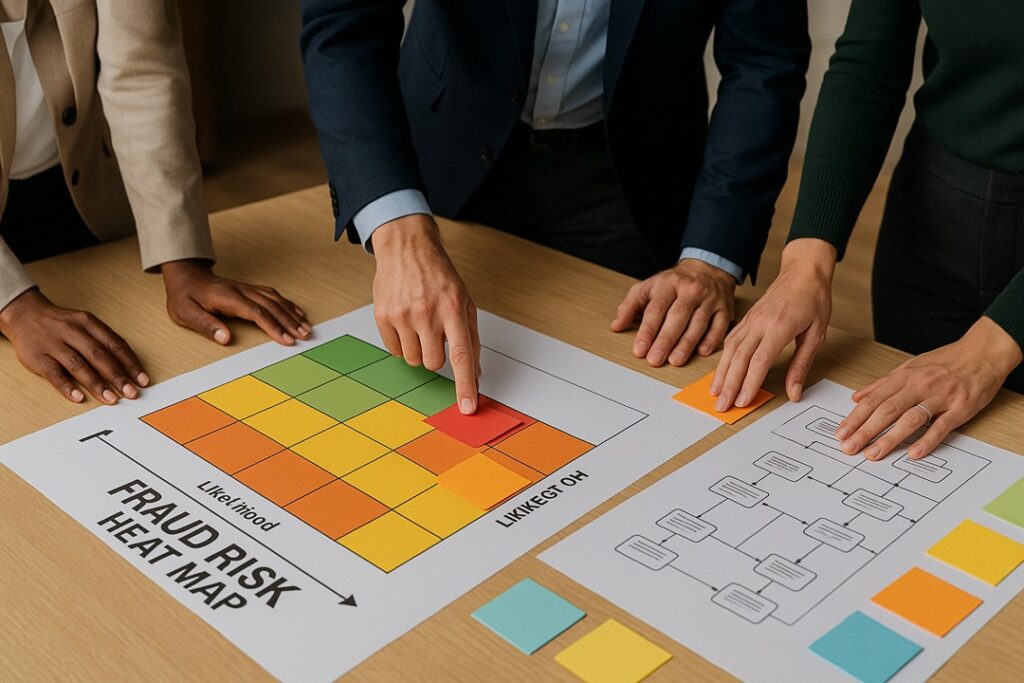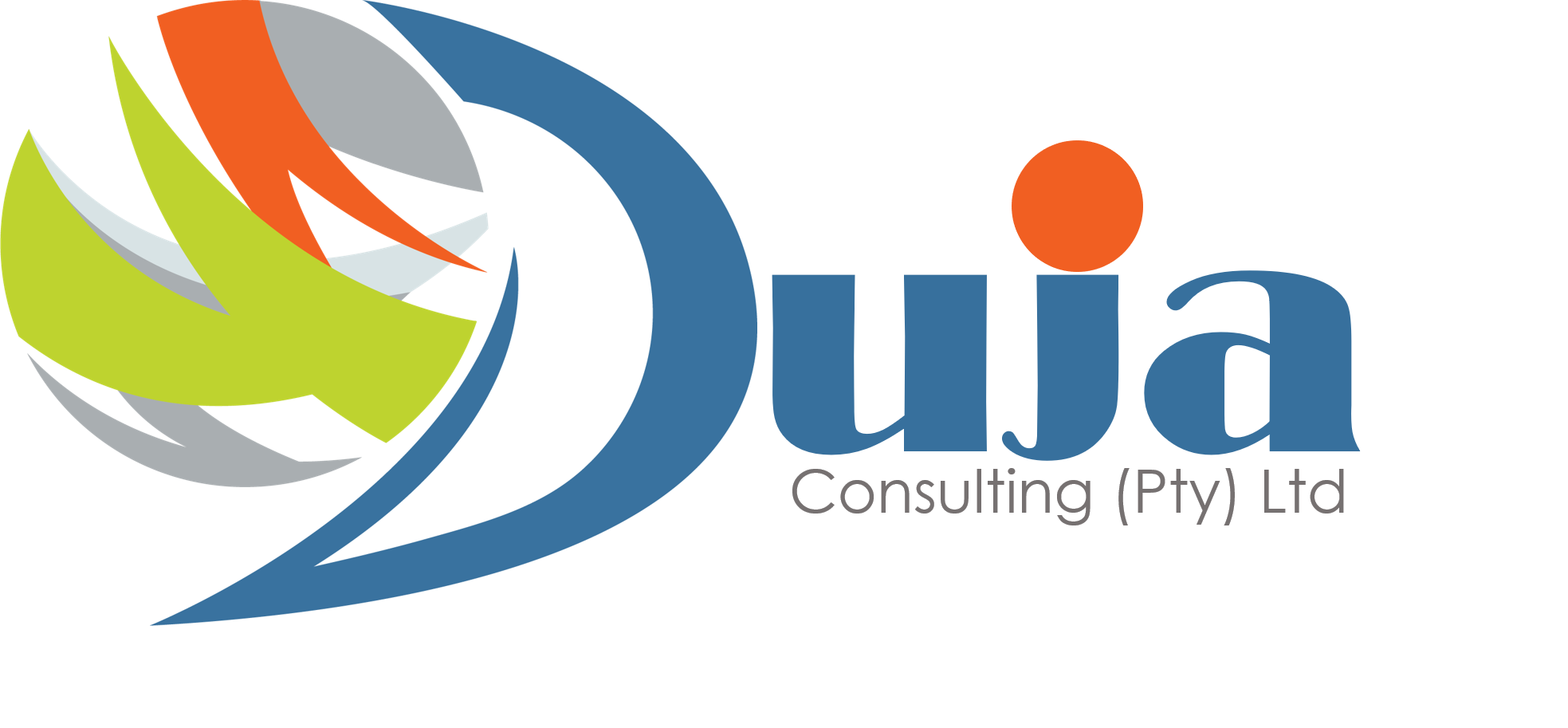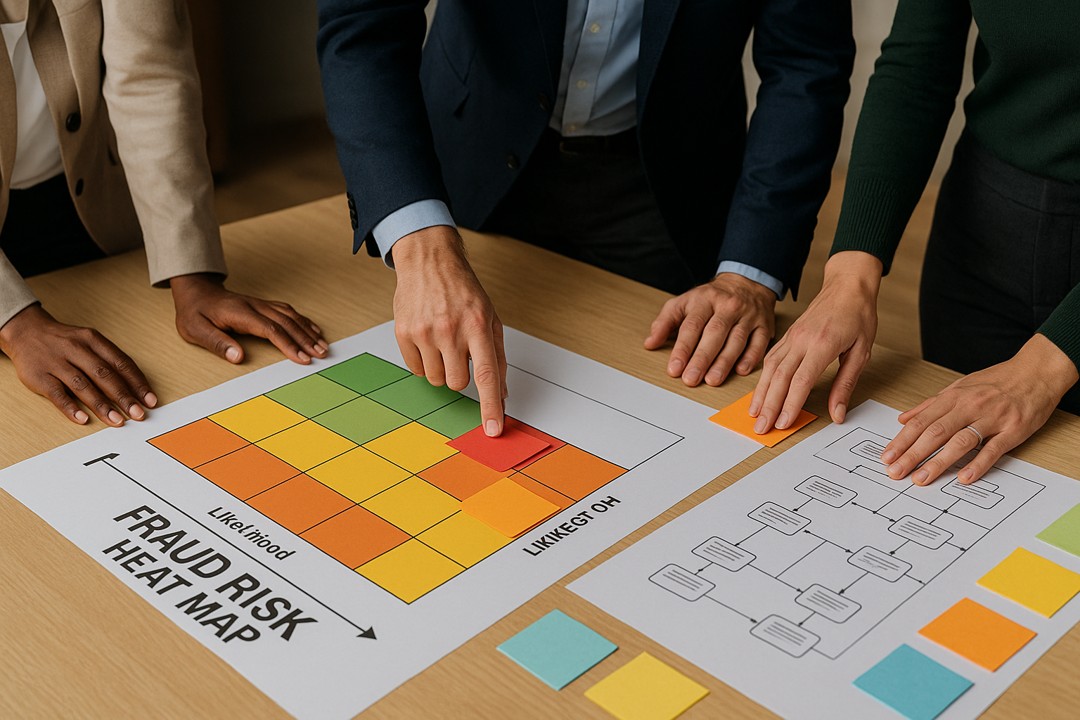Embedding Forensic Auditing into Enterprise Risk Strategy
From reactive investigations to proactive risk intelligence.
Fraud and misconduct are no longer occasional “events” – they are continuous strategic risks that can quietly erode value long before a whistle-blower speaks up.
Our latest Duja Consulting article, “From Reactive to Proactive: Embedding Forensic Auditing into Enterprise Risk Strategy,” explores how boards and executives can:
- Treat forensic auditing as a strategic capability, not just an emergency service
- Integrate forensic insight into enterprise-wide risk assessments and control design
- Use data analytics, digital forensics and whistle-blowing frameworks for early warning
- Turn lessons from investigations into stronger controls and culture
If you are responsible for audit, risk, finance or governance, this is a practical roadmap for building a fraud-resilient organisation – and protecting shareholder value.
If you would like to discuss how Duja Consulting can help embed forensic auditing into your enterprise risk strategy, we would be delighted to connect.

From Reactive to Proactive: Embedding Forensic Auditing into Enterprise Risk Strategy
Brought to you by Duja Consulting
Introduction: When “Firefighting” Is No Longer Enough
Most organisations still meet fraud and misconduct the same way they meet a warehouse fire: sirens blaring, advisors rushing in, a flurry of activity once the damage is already done. Traditional forensic audits are often treated as emergency responses – commissioned only when whistle-blowers speak up, media calls start coming in, or regulators begin to circle.
Yet the nature of fraud has shifted. Schemes are more complex, digital footprints are vast, and the reputational half-life of a scandal is measured in years, not months. Global research continues to show that forensic auditing is highly effective in both detecting and preventing fraud when it is applied systematically rather than only on demand.
To protect value in this environment, organisations need a different posture. Fraud and corruption cannot simply be “investigated away” after the fact. Forensic thinking must be built into the organisation’s enterprise risk strategy – influencing how risks are identified, how controls are designed, how data is monitored and how culture is shaped.
This article explores what it really means to move from reactive to proactive: treating forensic auditing as a strategic capability, not just a legal remedy. It also outlines a practical roadmap for boards, executives and heads of risk who want to embed forensic insight into the core of their enterprise risk approach.
1. Why Reactive Forensic Work Is No Longer Sufficient
When fraud is discovered late, organisations face a cascade of impacts:
- Direct financial loss – asset misappropriation, manipulated revenues, inflated procurement costs, payroll fraud and false vendors can quietly drain value for years before a single allegation surfaces.
- Secondary losses – legal costs, regulatory penalties, creditor pressure and higher financing costs often exceed the original fraud amount.
- Reputational damage – trust erodes with shareholders, regulators, employees, suppliers and communities. Reputational repair is slow and expensive.
- Leadership distraction – executive time is diverted from strategy to crisis management, often at critical moments in the business cycle.
- Control fatigue – hurried responses often lead to layers of extra controls that are bureaucratic but not necessarily effective.
Global risk and forensic specialists are emphasising the need to move from reactive compliance to proactive fraud resilience, integrating governance, technology and culture to anticipate fraud rather than merely documenting it afterwards.
A reactive approach might answer the question:
“What happened, and who is responsible?”
A proactive approach asks a different question:
“Where are we structurally vulnerable – and how do we close those gaps before misconduct occurs?”
2. Forensic Auditing as a Strategic Capability
Forensic auditing is often misunderstood as a niche, specialised service used solely for court-ready investigations. In reality, it is a bundle of capabilities that – when used proactively – can materially strengthen an organisation’s risk posture
A mature forensic function typically combines:
- Investigative accounting skills – tracing transactions, reconstructing records, following money and value flows, and interpreting unusual patterns in financial data.
- Legal and evidentiary awareness – ensuring that evidence is preserved, chain-of-custody is maintained, and investigation steps stand up to scrutiny in internal hearings and external proceedings.
- Digital forensics and data analytics – using tools to analyse large volumes of structured and unstructured data, identify anomalies and investigate digital behaviour (access logs, user actions, messaging).
- Interviewing and behavioural insight – understanding how collusion, pressure and opportunity interact; designing interviews that elicit facts and expose inconsistencies.
- Control design experience – seeing how fraudsters bypass weak controls in practice, and feeding that learning back into the control environment.
When these skills are isolated in a “break glass in emergency” box, the organisation loses most of their value. When they are integrated into enterprise risk strategy, they become a powerful mechanism for prevention and early detection.
3. Connecting Forensic Auditing to Enterprise Risk Strategy
Enterprise risk strategy sets out how an organisation identifies, assesses and responds to risks that could affect its objectives. Fraud, corruption and misconduct are not separate from this; they are core strategic risks.
Good governance frameworks, including widely adopted codes such as the King IV Report, stress the need for integrated assurance and robust oversight of risk, including fraud and corruption. Governing bodies are expected to ensure that risk management, internal audit and specialist functions collectively provide assurance over significant risks rather than operating in silos.
Embedding forensic auditing into enterprise risk strategy means:
- Treating fraud and misconduct risk as a defined risk category with clearly articulated risk appetite and tolerances.
- Positioning forensic insight within the combined assurance model, alongside internal audit, compliance and external audit.
- Ensuring that forensic specialists contribute to risk assessment workshops, scenario planning and control design, not only investigations.
- Aligning the forensic mandate with the organisation’s values, ethical standards and zero-tolerance stance on fraud and corruption.
The strategic question is not whether the organisation has access to forensic services. The question is whether forensic expertise actively shapes its risk view and control decisions.
4. Reframing the Fraud Risk Universe
A proactive stance begins with a hard look at where fraud and misconduct are most likely to arise.
A structured fraud risk assessment, informed by forensic experience, will:
- Map key fraud and misconduct scenarios across revenue cycles, procurement and supply chain, payroll and benefits, asset management, financial reporting, regulatory compliance and digital channels.
- Identify enablers of fraud – weak segregation of duties, override-prone approvals, manual workarounds, opaque related party arrangements, excessive reliance on a single supplier or employee, crisis-driven shortcuts.
- Assess likelihood and potential impact – not only in financial terms but also reputational, regulatory and operational consequences.
- Surface red-flag indicators – patterns that historically precede fraud, such as unusual journal entries, rapid vendor changes, pressure to bypass procedures, sudden lifestyle changes, or resistance to transparency.
- Prioritise hotspots for deeper control testing, continuous monitoring or targeted forensic reviews.
Forensic specialists bring real-world case insight into this process. They have seen how schemes are constructed, where collusion typically sits, and which early signals are often missed. That insight makes the risk assessment sharper, more realistic and more directly connected to actual behaviour.
5. Proactive Forensic Techniques Across the Risk Cycle
Moving from reactive to proactive involves deliberately weaving forensic techniques through the entire risk cycle – from strategic planning to day-to-day operations.
5.1 During strategy and planning
- Scenario analysis of fraud and misconduct – testing strategic initiatives (new markets, major capital projects, acquisitions, outsourcing) for potential fraud and collusion points before they are launched.
- Stakeholder mapping – identifying where conflicts of interest, related party risks or undue influence may arise in strategic partnerships and supply chains.
- Pre-implementation control design – involving forensic specialists in the design of governance structures, approval workflows and reporting lines for major programmes, rather than asking them to pick up the pieces later.
5.2 During process and control design
- Designing controls with the fraudster in mind – deliberately asking, “How could someone game this process?” and “Where would collusion override these checks?”
- Stress-testing key controls – using forensic-style walkthroughs, surprise tests and simulations to see whether controls fail safely or catastrophically.
- Embedding deterrence – signalling that transactions, relationships and decision-making processes are subject to forensic scrutiny where warranted, increasing the perceived likelihood of detection.
5.3 Continuous monitoring and analytics
Global guidance on fraud risk management increasingly highlights the role of ongoing monitoring, analytics and early-warning indicators.
Proactive forensic models often include:
- Transaction analytics – using rules, thresholds and anomaly detection to flag unusual payments, journal entries, discounts, refunds, supplier changes or expense patterns.
- Master data surveillance – monitoring changes to supplier, customer and employee master records, particularly bank details, dormant records reactivated, or unauthorised creation of new entities.
- Behavioural analytics – identifying unusual system access, after-hours activity, or unusual combinations of system roles that increase fraud opportunity.
- Thematic reviews – short, targeted forensic reviews of specific areas (such as high-risk projects, grants, or third-party agents) on a rotational basis.
5.4 Culture, whistle-blowing and response
A proactive strategy treats culture and reporting channels as core control elements, not soft “nice-to-have” features.
- Confidential whistle-blowing mechanisms – independent channels that encourage early reporting of suspicions, consistent with governance expectations and leading practice.
- Clear consequence management – consistent, fair and visible responses to proven misconduct to reinforce ethical norms.
- Rapid triage protocols – predefined criteria for when a concern is handled internally, escalated to forensic specialists, or reported to regulators or law enforcement.
Here again, forensic input is critical: it ensures that allegations are managed correctly from the outset, that evidence is not compromised, and that the organisation responds in a way that stands up to scrutiny.
6. Governance Structures That Embed Forensic Insight
Embedding forensic auditing into enterprise risk strategy requires a governance structure that is deliberate about where forensic insight sits and how it flows.
Key design principles include:
- Board and committee oversight
- Audit and risk committees should receive regular reporting on fraud risk exposure, significant forensic investigations, thematic findings and control improvements.
- Forensic insights should feed into discussions about risk appetite, control investment and culture, not just “noted” as operational matters.
- Clear mandates and independence
- Forensic functions should have a clear mandate covering both reactive investigations and proactive assignments (fraud risk assessments, control design input, data analytics).
- Reporting lines should protect independence, especially when investigations involve senior executives or politically exposed stakeholders.
- Alignment with legal and governance frameworks
- In jurisdictions such as South Africa, governance frameworks and legislation (including the Companies Act and King IV) emphasise transparency, ethical leadership and diligence in addressing suspected fraud. Shareholders may in some cases request forensic investigations, reinforcing the expectation that boards take proactive steps to protect stakeholder interests.
- Combined assurance and collaboration
- Forensic auditors, internal auditors, compliance officers and risk managers should operate under a combined assurance framework that clarifies roles and avoids duplication.
- Joint planning sessions and information-sharing protocols ensure that forensic insights inform audit plans and risk registers, and vice versa.
7. Technology, Data and the Future of Proactive Forensic Work
Fraud risk is increasingly digital – from cyber-enabled payment fraud to manipulation of data in core systems. In response, forensic auditing is evolving to rely more heavily on advanced data analytics, digital forensics and automation.
Recent work in forensic accounting and digital forensics highlights several trends:
- Advanced data analytics – using pattern recognition, clustering and anomaly detection to identify unusual transactions or relationships that merit deeper investigation.
- Digital forensics – collecting and analysing logs, emails, device data and system activity to reconstruct events and establish intent.
- Artificial intelligence-assisted review – applying machine learning models to large volumes of documents, communications and transactions to flag potential red flags for human review.
- Continuous fraud detection frameworks – integrating forensic rules into enterprise systems so that suspicious activities are flagged in near real-time rather than during an annual review.
For organisations, the challenge is not simply acquiring tools. It is ensuring that these tools are selected, configured and interpreted with forensic insight. Without that, analytics may produce floods of false positives or miss the real schemes hidden in plain sight.
8. Build, Buy or Blend? Developing Forensic Capability
Once leadership accepts that forensic auditing must be embedded into the enterprise risk approach, the next question is how to access and sustain the required capability.
Typical options include:
- Building an internal forensic team
- Suitable for large organisations with significant fraud risk exposure and ongoing demand for forensic work.
- Requires investment in specialist skills, technology and training, as well as careful positioning within the governance structure to protect independence.
- Partnering with external forensic specialists
- Ideal for organisations that need high-end capability on a flexible basis, or require independent investigations free from internal politics.
- External specialists bring cross-industry insight and lessons learned from multiple cases, which can be fed into proactive control improvements.
- Hybrid models
- A small internal capability focused on triage, fraud risk assessments and coordination, supported by external experts for complex investigations, thematic reviews and advanced analytics.
- This model often delivers the best balance between cost, independence and accessibility of skills.
Whatever the model, the goal is the same: forensic expertise must be visible, trusted and integrated into decision-making, not confined to a rarely used corner of the org chart.
9. A Practical Roadmap: From Reactive to Proactive
Boards and executives often ask a simple question: “Where do we start?” The shift to a proactive, embedded forensic model does not happen overnight, but it can be staged in practical steps.
A realistic roadmap might look like this:
- Clarify the organisation’s fraud and misconduct risk appetite
- Confirm the tone at the top: what will not be tolerated, and what the board expects in terms of prevention, detection and response.
- Commission a forensic-informed fraud risk assessment
- Map key scenarios, hotspots and red flags, drawing on internal data, control reviews and external case experience.
- Align governance and mandates
- Update charters for audit and risk committees, internal audit and any specialist functions to reflect proactive responsibilities in fraud risk management and forensic oversight.
- Integrate forensic expertise into enterprise risk processes
- Involve forensic specialists in risk workshops, strategic reviews, major project approvals and new product or market launches.
- Deploy targeted analytics and monitoring
- Start with a focused set of high-risk areas – for example, procurement, third-party payments or project expenditure – and build analytic routines that flag anomalies for review.
- Strengthen whistle-blowing and triage
- Review channels for raising concerns and the protocols for assessing allegations, maintaining confidentiality and preserving evidence.
- Run thematic forensic reviews
- Conduct short, deep-dive reviews in high-risk areas, not because there is an allegation, but to test controls, detect issues early and send a clear message about diligence.
- Embed lessons learned into controls and culture
- Treat every investigation or thematic review as a source of learning. Update policies, procedures, training and communication to reflect what has been uncovered.
- Report transparently to the board and stakeholders
- Provide structured reporting on fraud risk exposure, key findings, control improvements and cultural indicators, so that the board can exercise informed oversight.
- Review and refine regularly
- Fraud risk evolves with business models, technology and economic conditions. Periodically refresh the fraud risk assessment, analytics and governance arrangements to stay ahead.
This roadmap can be adapted to the size, sector and risk profile of the organisation.
What matters is the intent: to position forensic auditing as an integral part of how the organisation anticipates, manages and learns from fraud and misconduct risk.
10. Conclusion: Turning Forensics into a Competitive Advantage
When forensic audits are commissioned only in crisis, they are a cost – necessary, but painful. When forensic thinking is embedded into enterprise risk strategy, it becomes something far more valuable: a competitive advantage.
Organisations that use forensic insight proactively:
- Identify vulnerabilities earlier and close them before they are exploited.
- Reduce the financial and reputational impact of fraud and misconduct.
- Build stronger cultures of integrity, where employees understand that “how” results are achieved matters as much as the results themselves.
- Provide boards and stakeholders with confidence that fraud risk is being addressed systematically, not reactively.
- Free leadership to focus on strategy, innovation and growth, rather than firefighting preventable crises.
The shift from reactive to proactive does not mean there will never be another investigation. It means that investigations are fewer, better managed and more likely to reveal issues early, when they are still containable.
For many organisations, the missing piece is a partner who understands both the investigative depth of forensic work and the broader context of enterprise risk and governance.
Duja Consulting works with boards, executives and heads of risk to embed forensic auditing into enterprise risk strategy – from fraud risk assessments and control design to data analytics, whistle-blowing frameworks and complex investigations.
If you would like to explore how a more proactive, forensic-informed approach could protect and enhance value in your organisation, we invite you to connect with Duja Consulting to discuss your risk landscape and requirements.


